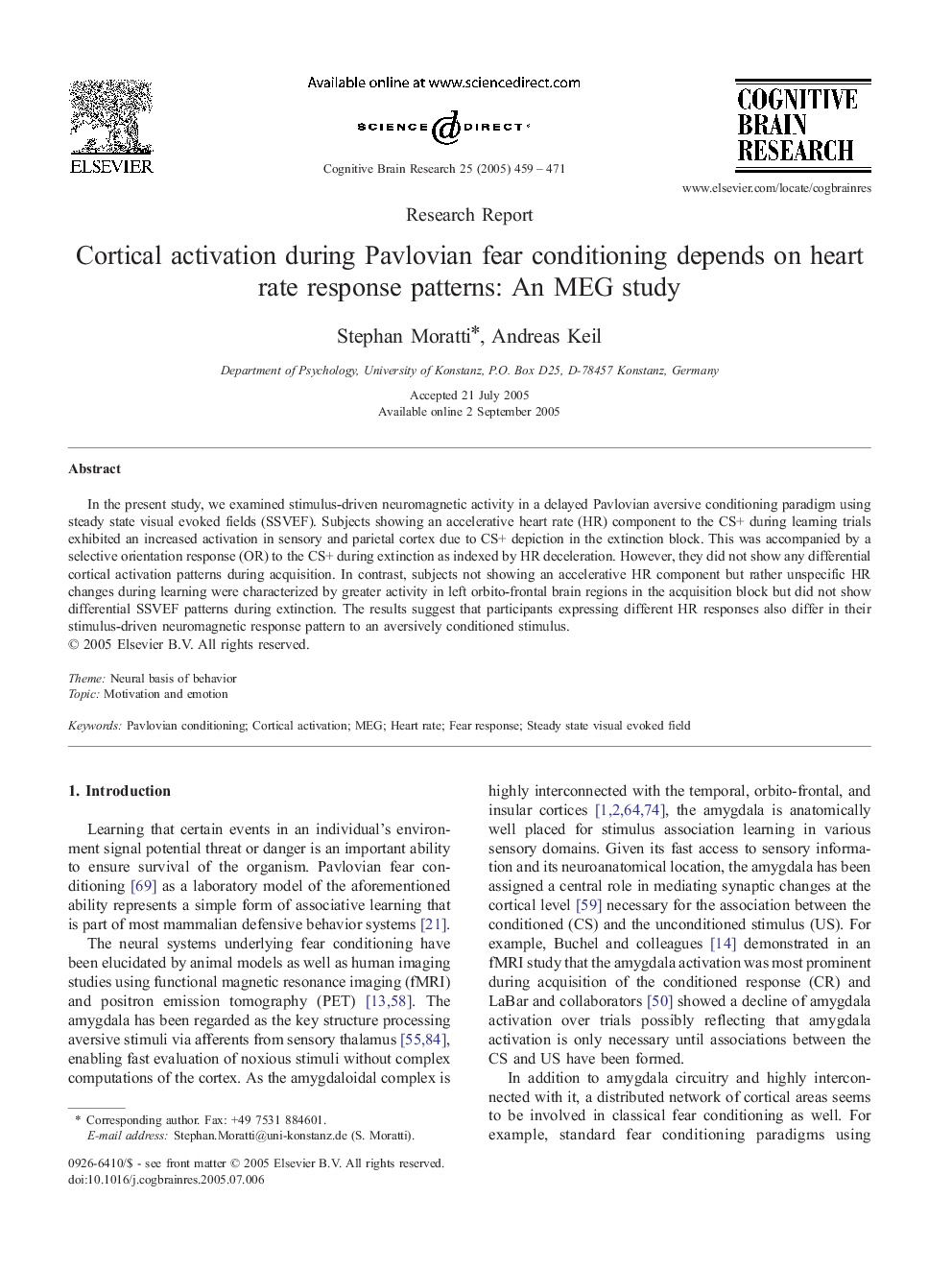| Article ID | Journal | Published Year | Pages | File Type |
|---|---|---|---|---|
| 9407995 | Cognitive Brain Research | 2005 | 13 Pages |
Abstract
In the present study, we examined stimulus-driven neuromagnetic activity in a delayed Pavlovian aversive conditioning paradigm using steady state visual evoked fields (SSVEF). Subjects showing an accelerative heart rate (HR) component to the CS+ during learning trials exhibited an increased activation in sensory and parietal cortex due to CS+ depiction in the extinction block. This was accompanied by a selective orientation response (OR) to the CS+ during extinction as indexed by HR deceleration. However, they did not show any differential cortical activation patterns during acquisition. In contrast, subjects not showing an accelerative HR component but rather unspecific HR changes during learning were characterized by greater activity in left orbito-frontal brain regions in the acquisition block but did not show differential SSVEF patterns during extinction. The results suggest that participants expressing different HR responses also differ in their stimulus-driven neuromagnetic response pattern to an aversively conditioned stimulus.
Keywords
Related Topics
Life Sciences
Neuroscience
Behavioral Neuroscience
Authors
Stephan Moratti, Andreas Keil,
